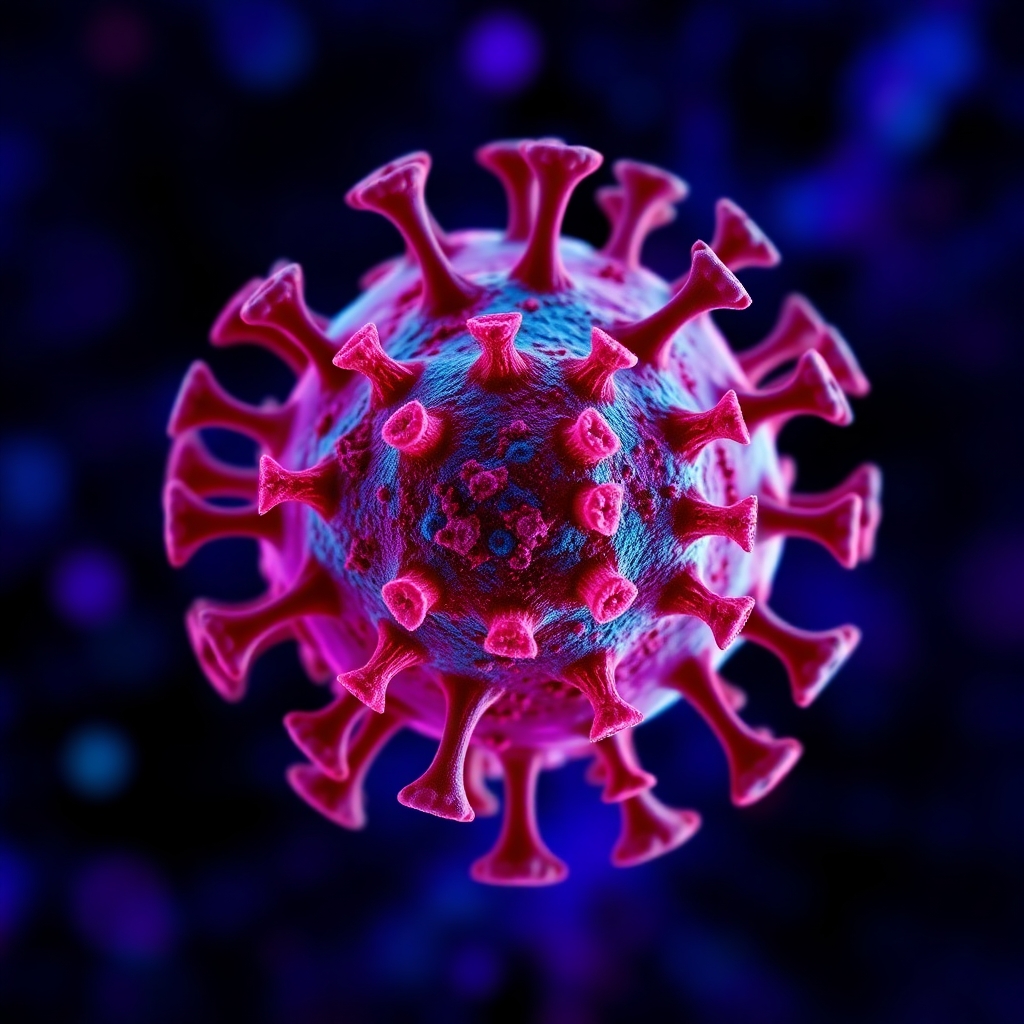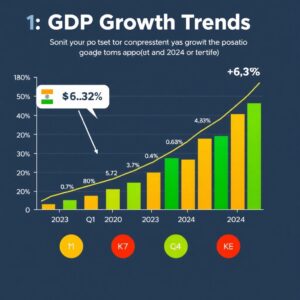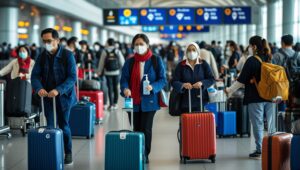Will HMPV cause new pandemic after Covid-19? What you should know
Will a Human Metapneumovirus (HMPV) Pandemic Follow COVID-19? Understanding the Risks
The COVID-19 pandemic shook the world, leaving an undeniable impact on public health and daily life. As we navigate a new normal, another respiratory virus looms on the horizon: Human Metapneumovirus (HMPV). This article will explore whether HMPV could cause another pandemic and what you should know to stay informed.
The Post-COVID-19 World: A Vulnerable Landscape

The global response to COVID-19 highlighted both strengths and weaknesses in our health systems. With populations still feeling the effects of lockdowns and social distancing, the immune systems of many may be weaker than before. This vulnerability raises new concerns about respiratory viruses like HMPV.
HMPV: A Familiar Threat, New Concerns
HMPV is not a new virus, yet its recent resurgence requires attention. This virus primarily affects the respiratory system, similar to RSV and other common viral infections. As people resume their routines, the risk of spreading HMPV increases, especially among high-risk groups.
Setting the Stage: Exploring the Pandemic Potential of HMPV
Could HMPV trigger a new pandemic? To answer this, we need to consider several factors including its transmission method, severity of illness, and existing immunity levels in the population.
Understanding Human Metapneumovirus (HMPV)
What is HMPV? Transmission, Symptoms, and Severity
HMPV is a virus that primarily causes respiratory infections, especially in young children, older adults, and immunocompromised individuals. Common symptoms include:
- Cough
- Fever
- Nasal congestion
- Wheezing
Severe cases may lead to pneumonia or bronchitis. The virus spreads through respiratory droplets, making it highly contagious.
HMPV vs. Other Respiratory Viruses: Key Differences and Similarities
HMPV shares similarities with other viruses like RSV and influenza but differs in its specific symptoms and severity for different age groups. Unlike COVID-19, HMPV mainly impacts the lower respiratory tract.
High-Risk Groups and Vulnerable Populations

Certain populations face higher risks from HMPV, including:
- Infants and young children
- Elderly individuals
- People with underlying health conditions, such as asthma or heart disease
Protecting these groups is vital in preventing severe outcomes.
HMPV’s Pandemic Potential: Assessing the Risk Factors
The Role of Mutation and Evolution in HMPV’s Spread
Like other viruses, HMPV can mutate. Such changes may lead to increased transmissibility or altered symptoms. Keeping an eye on these mutations is essential for predicting future outbreaks.
Global Surveillance and the Spread of HMPV Variants
Monitoring variants of HMPV around the world is crucial. Global surveillance efforts can help catch outbreaks early and provide responses before they escalate.
Immunological Factors and Population Susceptibility
With many individuals still recovering from COVID-19, the general population may have a lower immunity level to other respiratory viruses. This susceptibility may increase the potential for HMPV to spread widely.
Comparing HMPV to COVID-19: A Pandemic Preparedness Perspective
Pandemic Preparedness: Lessons Learned from COVID-19
The COVID-19 pandemic taught us valuable lessons about preparedness. Public health systems need robust strategies to handle emerging threats, including HMPV.
Similarities and Differences in Disease Severity and Impact
While HMPV is unlikely to produce the same widespread severe illness as COVID-19, it still poses a public health risk. Awareness and monitoring are key to minimizing its impact.
Healthcare System Strain and Resource Allocation
HMPV outbreaks could strain healthcare systems already burdened by COVID-19 recovery efforts. Planning resources for future pandemics is critical to success.
Preventive Measures and Mitigation Strategies
Vaccination: Current Status and Future Developments
Currently, there is no vaccine for HMPV, but research is underway to develop effective options. Immunization could play a significant role in future prevention strategies.
Hygiene Practices and Infection Control Measures
Simple hygiene practices can significantly reduce the spread of HMPV. These include:
- Regular handwashing
- Wearing masks in crowded places
- Avoiding close contact with sick individuals
Public Health Interventions and Community Preparedness
Community preparedness can lessen the impact of HMPV outbreaks. Public health campaigns should focus on education and awareness.
The Future of HMPV: Research, Surveillance, and Global Collaboration
Ongoing Research and Clinical Trials for HMPV Treatment
Scientists are actively studying HMPV to find effective treatments and preventive measures. Continued research is essential for staying ahead of potential threats.
The Importance of Global Surveillance and Data Sharing
Global cooperation in health monitoring can help identify HMPV outbreaks more quickly. Sharing data among nations is vital for effective responses.
International Collaboration for Pandemic Preparedness
International collaboration is necessary for fostering a unified response to emerging respiratory viruses, like HMPV. Countries must work together to share resources and strategies.
Conclusion: Staying Informed and Prepared for Emerging Respiratory Threats
Key Takeaways: Understanding the HMPV Risk
HMPV is a significant respiratory virus that deserves attention, especially in the wake of COVID-19. Understanding its transmission and risk factors is vital for effective prevention.
Actionable Steps for Individuals and Communities
Stay informed about HMPV and follow public health guidelines. Practice good hygiene and encourage others to do the same.
Looking Ahead: Continued Monitoring and Vigilance
As we move forward, ongoing vigilance towards respiratory viruses like HMPV is essential. By remaining informed and prepared, we can collectively face future health challenges.
















Post Comment